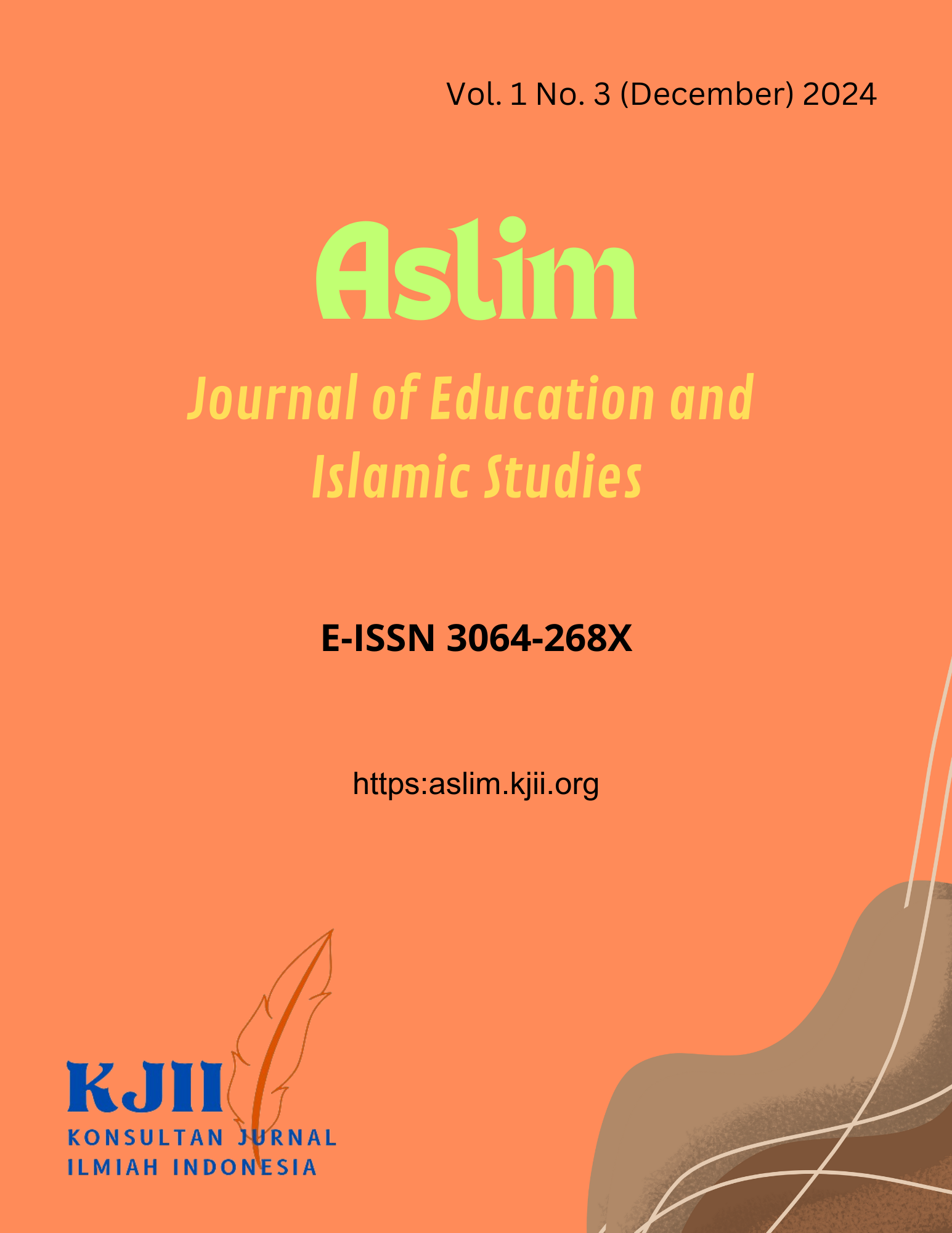Interpretation of Tawhid Rububiyah in the Qur'an Surah Al-Fatihah: Study of Tafsir Ijmali
Keywords:
Tauhid Rububiyah, Surah Al-Fatihah, Tafsir Ijmali, Oneness of Allah, CreatorAbstract
Surah Al-Fatihah, as the opening of the Al-Quran, contains a deep meaning that covers various aspects of faith, including Tauhid Rububiyah. This research aims to explore the interpretation of Tauhid Rububiyah in Surah Al-Fatihah using the ijmali interpretation methodology. Through analysis of the verses of Al-Fatihah, especially the second verse, "الْحَمْدُ لِلَّهِ رَبِّ الْعَالَمِينَ" (Praise be to Allah, the Lord of the worlds), this research reveals the meaning of the oneness of Allah as the Creator and Sustainer of the universe. This research also considers various perspectives from ulama in interpreting Tauhid Rububiyah in the context of Al-Fatihah. This research found that Surah Al-Fatihah explicitly emphasizes the oneness of Allah as Rabb, who has absolute power over everything. This is connected with various internal and external evidence, including other verses in the Koran and the hadith of the Prophet. The importance of understanding Tauhid Rububiyah through Surah Al-Fatihah lies in its practical implications in life. This encourages Muslims to recognize the oneness of Allah as Creator and Sustainer, thereby giving rise to feelings of gratitude, submission and obedience to Him. It is hoped that this research can contribute to a deeper understanding of Tauhid Rububiyah and its relevance in everyday life.
References
Abduh, Muhammad, Risalah Tauhid, Cet. X, (Jakarta: Bulan Bintang, 1996)
Al Hidayati, & Didik Himmawan. (2024). Analysis of Human Knowledge About the Spirit Perspective of Q.S Al-Isra’ Verse 85. Aslama: Journal of Islamic Studies, 1(1), 9–16. Retrieved from https://aslama.kjii.org/index.php/i/article/view/5
Ahmad Khotibul Umam, & Hafizha Aditya Putri. (2023). Bimbingan Mengaji, Menghafal Al-Qur’an Dan Melatih Kemampuan Bahasa Arab Melalui Les Untuk Anak-Anak Di Desa Bondan Kecamatan Sukagumiwang Kabupaten Indramayu. Journal Of Psychology, Counseling And Education, 1(1), 22–29. https://doi.org/10.58355/psy.v1i1.2
Asmami, H.M. Yusran, Ilmu Tauhid, (Jakarta: Raja Grafindo, 1993)
Asyifa Faradita, Muhammad Irsad, & Muhammad Nur Amin. (2023). Couples in the Qur’an (Comparative Study of the Interpretation of Ash-Sya’rawi and Hamka). Quality : Journal Of Education, Arabic And Islamic Studies, 1(2), 95–104. https://doi.org/10.58355/qwt.v1i2.29
Didik Himmawan, & Dewi Fitriani. (2023). Learning To Read And Write The Koran For Children In Sukasari Village, Arahan District, Indramayu Regency. Manajia: Journal of Education and Management, 1(2), 128–133. https://doi.org/10.58355/manajia.v1i2.17
Didik Himmawan, & Lisnawati. (2023). Bimbingan Tahsin Dan Tahfidz Al-Quran Untuk Anak-Anak Di Desa Cadangpinggan Kecamatan Sukagumiwang Kabupaten Indramayu. Journal Of Psychology, Counseling And Education, 1(1), 14–21. https://doi.org/10.58355/psy.v1i1.5
Ginal Leby, Ibnu Rusydi, & Ibnudin. (2023). Learning the Science of Tajwid and Tahsin of the Koran in Tegalwirangrong Village, Kertasemaya District, Indramayu Regency. Quality : Journal Of Education, Arabic And Islamic Studies, 1(2), 40–45. https://doi.org/10.58355/qwt.v1i2.16
Ibnu Rusydi, & Fitria Amalin Christia ‘Nisa. (2023). Implementasi Mengaji Al-Qur’an Dengan Tajwid Dan Makhorijul Huruf Bagi Anak–Anak Desa Kedokanbunder Wetan Kecamatan Kedokan Bunder Kabupaten Indramayu. Journal Of Psychology, Counseling And Education, 1(1), 7–13. https://doi.org/10.58355/psy.v1i1.4
M. Rizqi Abil Mawahib. (2024). Implementation of Al-Qur’an Reading Guidance for Students of the Bolon Islamic Boarding School, Tenajar Lor Village, Kertasemaya District, Indramayu Regency. Aslama: Journal of Islamic Studies, 1(3), 103–111. Retrieved from https://aslama.kjii.org/index.php/i/article/view/14
Rizki Nazriel Himawan, Tri Amelia Maharani, & Didik Himmawan. (2024). God and Divinity (Analysis of Surah Al-Baqarah 165 and Surah Al-Ikhlas). Quality : Journal Of Education, Arabic And Islamic Studies, 2(2), 129–139. https://doi.org/10.58355/qwt.v2i2.45
Siti Fatihatul Hasanah. (2024). Tahsin Learning in Reading the Qur’an for Children at the Hidayatul Mubtadien Prayer Room, Jengkok Village, Kertasemaya District, Indramayu Regency. Aslama: Journal of Islamic Studies, 1(3), 119–124. Retrieved from https://aslama.kjii.org/index.php/i/article/view/16 Wahyudi Ari, (2014). Kandungan Tauhid Dalam Surah Al Fatihah. Yogyakarta.





